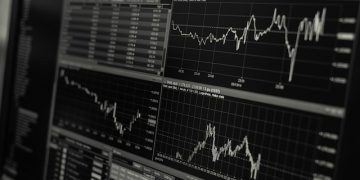Barstool Sports founder Dave Portnoy argues retail investors can’t trust Robinood and its CEO Vlad Tenev following the GameStop trading frenzy.
Exuberant stock-market investors are headed for a rude awakening, according to a growing number of Wall Street strategists.
The S&P 500 has rallied nearly 76% off its March 2020 lows as unprecedented fiscal and monetary stimulus and the Federal Reserve’s promise of low-interest rates for years has given investors the confidence to buy stocks hand over fist.

“Our current caution reflects several factors, including ebullient sentiment readings, stretched valuation levels, and slipping earnings revision momentum,” wrote Citigroup Inc. strategist Tobias Levkovich, who expects the S&P 500 to trade between 3,600 and 4,000.
| Ticker | Security | Last | Change | Change % |
|---|---|---|---|---|
| SP500 | S&P 500 | 3920.7 | -10.63 | -0.27% |
TEXAS STORMS CAUSE EPIC DROP IN U.S. OIL PRODUCTION
He added that a “neutral stance is realistic,” but warned stocks could fall up to 20% from current levels while ruling out a decline of 50% or more as the U.S. economy is exiting, not entering, a recession and Fed policy remains accommodative.
10-Year Treasury Yield Rising
Others on Wall Street worry that rising interest rates will derail the stock market’s rally. Some strategists are eyeing the 1.5% level on the 10-year yield, which also corresponds to the S&P 500’s dividend yield.
The 10-year rising above 1.5% would cause the S&P 500 to “adjust downward by 8% or more,” wrote Nomura strategist Masanari Takada. His main scenario, however, is for the benchmark yield to hold in the 1.3% to 1.4% area and having a mild impact on stocks.
Breaching 1.5% on the 10-year would be a “huge overshoot,” said David Rosenberg, chief economist and strategist at Toronto-based Rosenberg Research.
Even if that were to happen, Rosenberg thinks investors would be best to “ignore calls of peril” as the 10-year has often risen above the S&P 500’s dividend yield by 100 basis points or more “without upsetting the apple cart.” He remains cautious on risk assets in general due to their pricing.
While more strategists are erring on the side of caution, big money managers are as bullish as ever, according to a survey conducted by Bank of America.
A net 80% of respondents said stocks were in a bull market while 13% thought they were in a bubble.
GET FOX BUSINESS ON THE GO BY CLICKING HERE
Accordingly, their allocations to stocks and commodities are the highest since February 2011 with a record number taking “higher than normal” risk. Cash levels are down to 3.8%, the lowest since March 2013.
“The only reason to be bearish is, there is no reason to be bearish,” wrote Michael Harnett, chief investment strategist at Bank of America.




